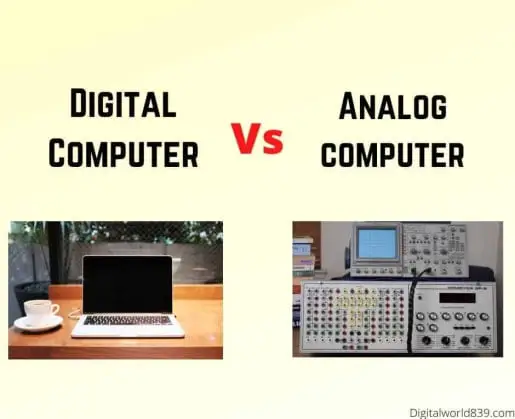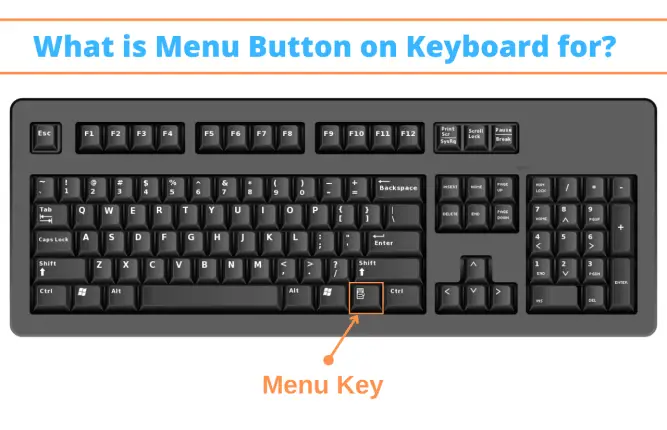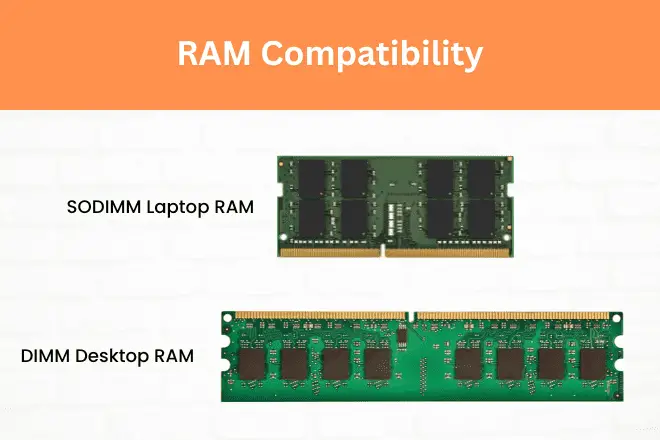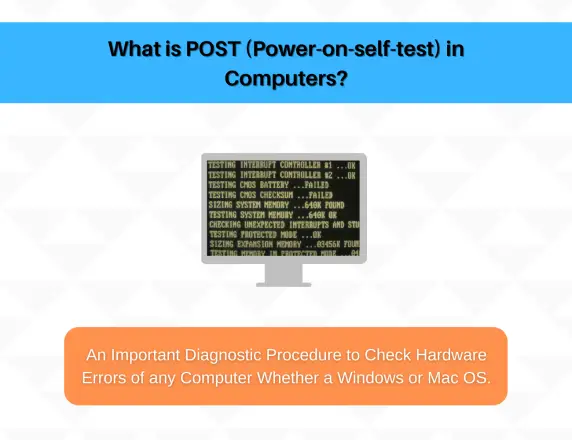Digital Computer examples are one of the wonders of modern technology; computers have become very important in today’s world. Majorly computers have been divided into three depending upon application: Analog computer, Digital computer, and Hybrid computer.
Today in this article, we will uncover Digital Computers which are being used in abundance at present. Let’s get to know ‘What digital Computer?’ examples are and ‘What the difference between digital and analog computers.‘
Digital Computer, What is it?
Digital computers are built to bring the solutions of equations to an almost unlimited precision, but in a bit slow manner compared to analog computers.
They all have similar components for receiving, processing, sorting, and transmitting data and using a relatively small number of essential functions to perform their tasks.
As its name suggests, a digital computer represents the digital computer’s letters, numerical values, or any other special symbols. This computer is the computer that calculates the number for processing the data.
The inputs and outputs of these computers are binary code i.e., and they use 0 and 1 (binary numbers) for computer operation. The accuracy of these computers is 100%. Digital computers understand machine languages only.
It performs all operations related to computer calculations by adding data. After that, the computer simultaneously takes the required data as input and then performs the calculations and mathematical functions on them and simultaneously provides the results on the monitor screen as an output.
Digital computers use discrete electrical signals for operation rather than continuous electrical signals that made the most common form of computers today because of their versatility, speed, and power.
While analog computers are examples of non-digital computers, they can be electronic computers, and mechanical computers are examples of non-electronic computers (which may or may not be digital).
An example of a computer that is both Non-Digital and Non-Electronic is the ancient Antikythera system found in Greece. Digital computers mainly represent the 5th generation of computers.
Features of Digital Computers
Digital computers are general-purpose machines, i.e., they can solve virtually all kinds of problems. These computers have a large internal memory, where millions of characters can be entered.
Digital computers are used to process both numeric as well as non-numeric data.
It can also perform many arithmetic operations such as addition, subtraction, multiplication, division, and logical operations. It is necessary to have a good enough knowledge of programming to work on these types of computers.
Digital Computers are suitable for solving many problems, and therefore are very popular. They are commonly used in all places. Such as at the home, office, shop, railway, hotel too, etc. Other applications include business, banking, education, entertainment, etc.
These computers are precise because they provide the exact answer to a specific problem. Most of the computers which are available at present are all digital computers. Read all the essential features of computers.
Working of Digital Computer in simple Terms :
Digital computers work in four steps.
- Reads input,
- Save the input to the memory,
- Processing data,
- Provides the Output.
Examples of Digital Computers
- Personal Computers (Desktops, Laptops, Notebooks, and Chromebooks),
- Smartphones, and Tablets,
- Calculators,
- Digital Weighing Machine,
- Accounting machines,
- Digital clock,
- ATM (Automated Teller Machine).
Uses of Digital computer
- Scientific research: Digital devices are used to solve mathematical calculations, numerical counts, etc.
- Technical applications: these are applications where digital tools are used to facilitate engineering designs, drawing plans, commercial product designs, etc.
- Control systems: consist of remote control mechanisms designed for use in private and industrial homes. Such as electrical appliances, turning the lights on or off, defrosting the refrigerator, regulating the heating or air conditioning, starting the coffee maker, etc.
Advantages of Digital Computer
Disadvantages of Digital Computers
Comparison of digital and analog computers.

Difference Between Digital and Analog Computers.
Difference | Digital Computers | Analog Computers |
1. Definition | A computer that uses a discrete signal for its operation is called a digital computer. | A computer that uses a continuous signal to process is called an analog computer. |
2. Output | The output of digital devices is in the form of binary numbers. | The output of an analog computer in the form of graphical or voltage signals. |
3. Working face | Digital Computers transmit the data on a discrete signal. | Analog Computer transmits the data on a continuous signal. |
4. Ability | The Digital system is able to simulate Analog Computer’s behavior. | Analog computer has a limited ability to function as a digital computer. |
5. Speed | Digital computers are high-speed devices that you can rely on. | Analog computers are slower and less reliable. |
6. Usage | Digital computers are used around the world as they are quite easy to use digital computers. | Analog computers are used in specific fields such as mechanical engineering and medicine as they are difficult to use. |
7. Measuring task | Digital computers perform mathematical functions, complex calculations, media streaming, etc. | This Computer measures Analog Quantity like the voltage, temperature, etc. |
8. Accuracy | Digital computers lose precision due to the nature of discrete signals. | Analog computers provide accurate computation results. |
9. Use | These computers are designed to use for general purposes, thus can be used in all aspects of life. | These computers are designed for specific operations, mainly used in the field of science. |
10. Examples | The best example of digital devices are PC, smartphones, calculators, a pedometer, (which counts the exact number of steps while walking.) | The best example of an analog device is 3 hands wrist watch and oscilloscope (an instrument used to display and analyze the waveform of electronic signals) used by engineers for measurements. |
I hope you got the digital computer examples also the difference between digital and analog computers. Read Faqs also.
FAQs
What is meant by digital computer?
A computer that uses a discrete signal for its operation is called a digital computer. It can perform arithmetic operations such as addition, occurrence, subtraction, multiplication, or division, as well as all types of logical(mathematical) operations. The inputs and outputs of these computers are in the form of binary code i.e. they use 0 and 1 for computer operations.
What is the use of digital computer?
Digital computers consist of remote control mechanisms designed for use in private and industrial homes, Such as electrical appliances, turning the lights on or off, defrosting the refrigerator, regulating the heating or air conditioning, starting the coffee maker, etc. Also, a digital computer is used as an instrument in Scientific research for solving mathematical calculations, numerical counts, etc.
What is digital computer example?
The best example of a digital computer would be a pedometer device, which counts the exact number of steps while walking or running.
What are the advantages of digital computer?
Information or data can easily store in digital computer systems as an advantage over analog ones. Other advantages of digital computers are that they are more reliable, flexible, versatile, compatible, less expensive, and easy to manipulate.
What are the characteristics of digital computer?
The following are the best characteristics of digital computers: 1. The digital computer must be programmed before being used for any specific purpose. 2.They are general-purpose machines i.e they can solve virtually all kinds of problems. 3.These computers have a large internal memory, where millions of characters can be entered. 4.Digital computers are used to process both numeric as well as non-numeric data.
What is the difference between analog and digital computer?
Both digital and analog computers are used to transmit information using an electrical signal, but differ in the way information is transmitted. In analog computers, data is transmitted using signals in continuous form, while in digital computers data is transmitted using discrete signals, which are usually in the form of binary numbers.
Which is faster analog or digital computer?
Digital computers are high-speed devices that you can rely on. While Analog computers are slower and less reliable.
Are Analog more accurate than digital computers?
Digital computers lose precision due to the nature of discrete signals. while Analog computers provide accurate computation results.






I love digital computer